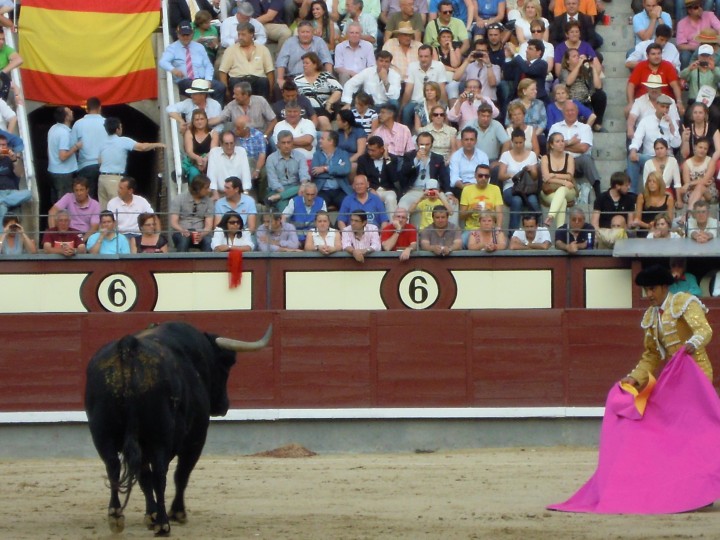La cuadrilla del matador y el matador se enfrentan al toro con el capote al principio de la lidia. En los dos primeros Tercios , la capa se usa para situar en suerte al toro, es decir, para posicionarle para ser picado y banderilleado. Existe un amplio repertorio en el uso de la capa.
La capa es un trozo de tal de 113 o 123 cm y de 4 o 6 kilos de peso. Antiguamente los caballeros iban montados a caballo y sus asistentes a pie usaban la capa para enfrentarse al toro. La capa es está hecha de material sintético o seda y es de color rosa en su parte frontal y amarilla en en su reverso. El material sintético evita que el cuerno del toro traspase la capa. Este material está tratado químicamente para ser impermeable a la sangre del animal
The members of the matador’s team and the matador face the bull with the CAPOTE at the begining of the bullfight
In the first two stages of the bullfight, the cape is used to “situar en suerte”, in
other words, to take the bull to an ideal spot to be jabbed by the Picador and to be
stabbed in the neck with the “Banderillas”. But the bullfighter also uses the cape
artistically. There is a wide range of ways of using the cape.
The Capote is a piece of cloth 113 or 123 cm long and weighing 4 or 6 kg.
In the early days of bullfighting the knights went out on horse back and their assistants on foot dressed in cape and they used them in their fight with the bull. Over the years this Capa was replaced by the Capote, which was red and made of wool. Currently it is pink ahead and yellow, green, blue or purple behind, according to the preference of the bullfighter. Nowadays the Capote is made of synthetic material (nylon) or silk to prevent the horn from engaging the cloth and it is treated with chemicals to keep it from penetrating the animal’s blood and to give it weight and stiffness.

